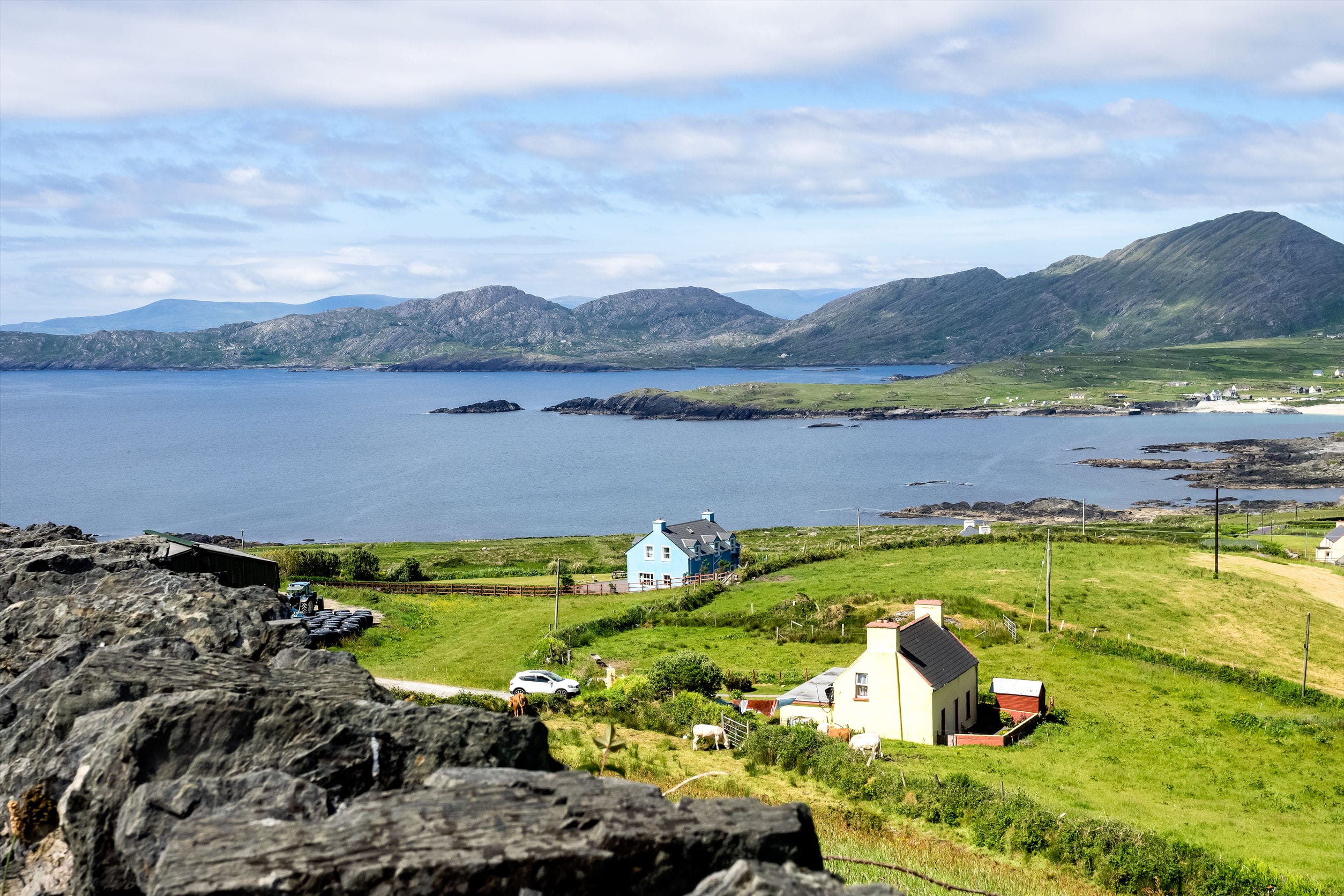
Route Overview
Where is the Beara Way?
The Beara Way is a long-distance, looped walking trail sitting on the border between Cork and Kerry in Ireland. The trail begins and ends in the village of Glengarriff and passes through towns and villages such as Castletownbere, Eyeries, Allihies and Kenmare. Situated in the southwest of Ireland on the Beara Peninsula, and on the Wild Atlantic Way, it is one of Ireland’s official national waymarked trails.
Why should you walk the Beara Way?
The Beara Way is a popular choice for hikers who want to experience the natural beauty of Ireland and immerse themselves in the local culture. It’s one of Ireland’s longest trails and is suited to walkers looking for a challenge, with steep climbs, descents and rough terrain making it an excellent choice for those looking for a physical challenge. That said, Hillwalk Tours also offers gentle and moderate itineraries to make the hiking a lot more manageable and for those who want a bit more time to soak up the atmosphere along the way.
It’s a mountainous, predominantly wild trail, so if you were looking for remote – you’ve found it. It’s quieter than the Dingle Way & Kerry Way trails but offers similar scenery. Rugged, rough and remote, the route takes hikers through stunning and scenic landscapes, with views of rugged coastline, rolling green hills, mountains, valleys, and pristine lakes making it a truly breathtaking experience for nature lovers. The Beara Way is an ideal place to escape the hustle and bustle of daily life and enjoy the peaceful, rejuvenating experience of immersing oneself in nature, allowing time to connect with spirit and self.
The route passes through many sites of historic importance, including ancient stone circles, early Christian churches and copper mines sites used in the 19th and 20th centuries.
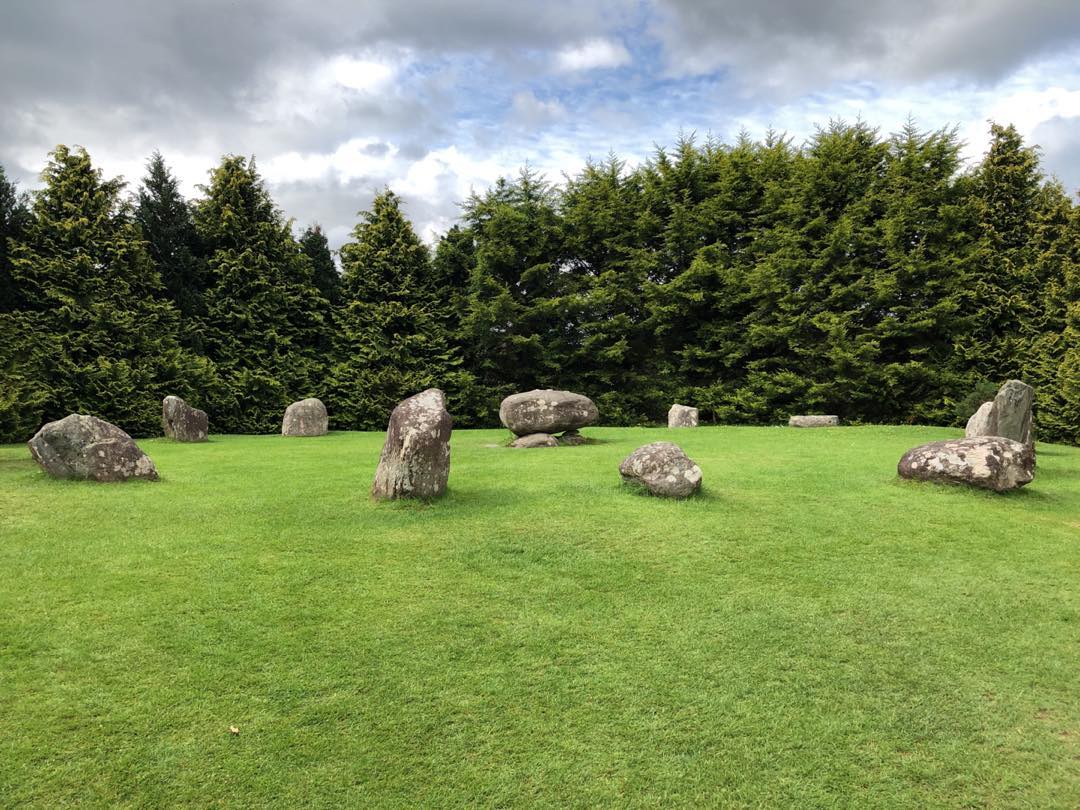
When is the best time to walk the Beara Way?
As with any part of Ireland, it’s worth noting that the phenomenon of ‘4 seasons in a day’ is always on the cards. Seasonally, spring shows us the first touches of life in the form of wildflowers and frolicking lambs, summer will tend to be warmer and dryer, autumn offers a new palette of colour, and winter transforms the area into a moody hibernal scene, windswept and cloud-covered, yet awe inspiring none the less. For weather, the ideal time to hike is between April and September, with the summer months being ideal in terms of daylight and offering (somewhat) more predictable weather, though it is still essential to pack waterproof clothing when visiting during this time.
As stated above, the trail is relatively quiet, so if you are looking to avoid crowds you will probably be ok all year round.
How long does it take to hike the Beara Way?
The 152km (94 miles) long Beara Way trail usually takes between 4 and 9 days to complete. This depends on the pace you walk it, fitness levels and what activities and attractions you may like to visit along the way.
At Hillwalk Tours, we offer Gentle, Moderate and Challenging tour grading levels depending on the balance of physical challenge and comfort level that you require. Within these levels, you can choose between 5 to 11-day hiking tours to complete the full trail or part of it. All you have to decide is how many kilometres/miles you would like to walk per day and we’ll take care of the rest!
Tour Route
Types of Trails
Choosing the right hiking tour for you can be, at times, tricky. It is always important to consider your own physical capability and comfort levels.
For example, at Hillwalk Tours, we have grouped each trail route we offer into three categories depending on personal preference and fitness levels. These are – gentle, moderate, and challenging. Each of these categories, depending on the destination, will include anything from 4 to 13-day itineraries, with customers given the option to add rest days where they see fit.
Our gentle hikes are perfectly suited for those who would consider themselves as a part-time hiker who enjoys taking photos and meeting locals while taking in the spectacular scenery. Our moderate hikes will suit people who are used to regular exercise and appreciate the opportunity of covering plenty of ground each day without going beyond their limits. Finally, our challenging hikes are for hikers who look to set off early in the morning and not stop until they have reached their destination.
With regards to our Beara Way trail, we offer gentle, moderate and challenging hikes. Each of these hiking categories cover the following average hiking distance and time each day:
Gentle: 13-16km or 8-10 miles and between 4-6 hours per day
Moderate: 19-21km or 12-13.5 miles and between 5-7 hours per day
Challenging: 22km-26km or 14-16 miles and between 5-8 hours per day
Hillwalk Tours Guidebooks & Notes
If you decide to walk the trail with Hillwalk Tours, you will receive a detailed walking pack once you have fully booked your hiking holiday. This walking pack will include detailed Ordnance Survey (OS) maps and unique route notes and walking directions written and constantly updated by our route development team. By personally walking each trail and creating our own detailed route notes, it allows us to provide more itineraries, route options and alternatives than what you will typically find across generic guidebooks. It also includes GPS tracks meaning you will never have to worry about getting lost.
Alternatively, off-the-shelf guidebooks covering the Beara Way can be found. The Beara Way Guidebook and A Guide to Hiking The Ireland Way are useful accompaniments for any hikers doing the trail.
Starting and Finishing Point
The full trail follows a loop, so both the starting point and finishing point are the village of Glengarriff. Glengarriff is a small village, brimming with character and beautiful scenery, surrounded in native ancient woodland and lush vegetation.
Glengariff is the perfect place to fuel up before you begin walking and the perfect place for weary walkers to unwind after their Beara Way hike, with restaurants serving the best of local produce and lively pubs with great music and a warm welcome.
Public transport options around the peninsula are very limited but there are a number of local taxi companies, so a little bit of forward planning may be required to get there.
Sample Beara Way Itineraries
The following are examples of Gentle, Moderate and Challenging itineraries from Hillwalk Tours for hiking the Beara Way.
Gentle 6-Day
Day 1: Arrival in Castletownbere
Day 2: – Bere Island (14/24km or 9/15miles)
Day 3: – Castletownbere – Allihies (15km or 9.5miles)
Day 4: – Allihies – Dursey Sound (10/15km or 6/9.5 miles)
Day 5: – Dursey Island (15km or 9.5miles)
Day 6: Departure from Castletownbere
Gentle 7-Day
Day 1: Arrival in Castletownbere
Day 2: – Bere Island (14/24km or 9/15 miles)
Day 3: – Castletownbere – Allihies (15km or 9.5 miles)
Day 4: – Allihies – Dursey Sound (10/15km or 6/9.5 miles)
Day 5: – Dursey Island (15km or 9.5 miles)
Day 6: – Allihies – Eyeries ( 13km or 8 miles)
Day 7: Departure from Eyeries
Moderate 8-Day
Day 1: Arrival in Glengarriff
Day 2: – Glengarriff – Adrigole (13km or 8 miles)
Day 3: – Adrigole – Castletownbere (18/22km or 11/14 miles)
Day 4: – Bere Island (14/24km or 9/15 miles)
Day 5: – Castletownbere – Allihies (15km or 9.5 miles)
Day 6: – Allihies – Dursey Sound (10/15km or 6/9.5 miles)
Day 7: – Dursey Island (15km or 9.5 miles)
Day 8: Departure from Castleownbere
Challenging 11-Day (Covering the Entire Trail)
Day 1: Arrival in Glengarriff
Day 2: – Glengarriff – Adrigole (18km or 11.5 miles)
Day 3: – Adrigole – Castletownbere (18/22km or 11/14 miles)
Day 4: – Bere Island (14/24km or 9/15 miles)
Day 5: – Castletownbere – Dursey Sound (23/27km or 14.5/17 miles)
Day 6: – Dursey Island (15km or 9.5 miles)
Day 7: – Dursey Sound – Eyeries (15/24km or 15 miles)
Day 8: – Eyeries – Lauragh (27km or 17 miles)
Day 9: – Lauragh – Kenmare (24km or 15 miles)
Day 10: – Kenmare – Glengarriff (24/27kmkm or 15/17 miles)
Day 11: Departure from Glengarriff
Currency and Expenses
The currency used throughout Ireland is the Euro (€).
The cost of food, drinks, and activities in Cork and Kerry can vary depending on several factors such as the type of establishment, the time of year, and personal preferences.
Eating out in restaurants can range from affordable to moderately expensive, depending on the type of cuisine and establishment. A meal for one person in a mid-range restaurant can cost around €15 to €30, excluding drinks. If you prefer more upscale dining, the prices can go higher. The cost of drinks in Cork/Kerry, particularly in pubs, can vary. A pint of beer or a glass of wine can cost around €4 to €8, depending on the establishment. Prices may be higher in touristy areas or during peak seasons.
The Beara Way offers a variety of activities, including boat trips and exploring historical sites. The prices for these activities can vary. As mentioned above, it’s worth noting that prices can be higher during the peak tourist season (June, July and August) compared to the off-peak season.
The Beara Way Accommodation and Services
Along the Beara Way, you can find various accommodations and services to cater to hikers’ needs.
Hotels & Guesthouses
There are several hotels and guesthouses available along the Beara Way. These accommodations offer comfortable rooms, dining facilities, and amenities for travellers.
Bed & Breakfasts (B&B)
B&Bs are a popular choice along the trail, providing cozy and affordable lodging options. They offer comfortable rooms, breakfast, and often have friendly hosts who can provide local information and tips for your journey.
Hostels
For budget-conscious travellers, there are hostels scattered along the route. These establishments usually provide dormitory-style accommodations and communal facilities such as kitchens and lounges.
Camping
If you prefer camping, there are designated campsites available along the Beara Way. These sites typically provide basic amenities such as toilets, showers, and sometimes cooking facilities.
Wild camping along the Beara Way, although not prohibited by law, requires careful consideration due to the exposed terrain, lack of shelter from strong winds and rain, muddy conditions in Spring, and the need for appropriate equipment to endure Ireland’s unpredictable weather.
Airbnb
Airbnb accommodations offer a diverse range of options, from cozy cottages to seaside retreats, providing a unique and personalized experience for hikers. There is a good mix of unique and traditional accommodations to choose from providing a one-of-a-kind experience in the Cork and Kerry countryside.
Restaurants and Cafes
Along the trail and in towns and villages, you’ll find numerous restaurants, cafes, and pubs where you can enjoy a meal, snack, or a refreshing drink. These establishments serve both local and international cuisine, including traditional Irish dishes. Most restaurants and cafes will also be able to meet several dietary requirements.
Shops and Grocery Stores
In the towns and villages along the Beara Way, you’ll find grocery stores and shops where you can stock up on food, water, and other supplies for your journey. It’s advisable to plan ahead and carry snacks and water while hiking between settlements.
ATM’s
There are ATMs available in towns and villages along the route. It’s important to note that the availability of ATMs may be limited, especially in smaller villages or remote areas. To ensure you have enough cash for your journey, it’s advisable to plan ahead and withdraw sufficient funds in larger towns where ATMs are more readily accessible. Additionally, carrying some cash with you is recommended for places that may not accept cards or in case of any unforeseen circumstances. There is the potential to obtain cashback from certain stores. This means that when making a purchase with your card, you can request additional cash on top of your payment. However, it’s worth noting that not all stores offer this service, and the maximum amount of cashback might vary.
The Beara Way Trail Etiquette
The Beara Way is renowned for its stunning natural beauty and environmental conservation efforts such as the gardens of Glengarriff, the Gleninchaquin Valley or the copper mining heritage of Allihies. Many locals are passionate about preserving the region’s landscapes and marine life. Respect for the environment, such as practicing responsible tourism, following designated hiking trails, and supporting eco-friendly initiatives, is highly valued in the region.
Trail etiquette is highly valued along the Beara Way, and hikers are encouraged to follow the principles of the Leave No Trace organization. It is essential to respect the natural environment by refraining from littering or leaving behind any waste, including fruit peels, wrappers, or other non-biodegradable items. Hikers are expected to carry out all their trash and dispose of it properly in designated bins or take it with them until they find appropriate disposal facilities. By practicing Leave No Trace principles, hikers contribute to preserving the pristine beauty of the trail and ensuring its enjoyment for future generations.
At Hillwalk Tours, we proudly support sustainable tourism and love the countryside as it is – wild, peaceful and clean. We are proud to support the “Leave No Trace” initiative that aims to preserve the natural beauty of each nations countryside where we offer hiking holidays.
Hillwalk Tours Beara Way Map
The Beara Way Terrain
Waymarking
The Beara Way is an official National Waymarked Trail. Because of this the Beara way is abundantly marked with distinctive waymarkers with a yellow walking person symbol. These waymarkers can be seen at regular intervals along the trail.
If you are ever in doubt, you can also check the Hillwalk Tours turn by turn directions and route notes including GPS coordinates provided in your walking pack. We also supply all you need to know about local information and history as you pass, along with trail alternatives and other activities.
Difficulty
The Beara Way is in general considered to be a moderate to challenging hike. The trail includes some challenging uphill sections but as stated earlier in this article, with Hillwalk Tours the trail can be taken with three levels of walking in mind: Gentle, Moderate and Challenging. We personally walk the trails and create these custom itineraries to suit all walkers.
Sights & Attractions
1. Dursey Island & Cable Car
Explore the magnificent, practically deserted, Dursey Island – a truly magical spot. Although there is an old pier on the island, Dursey is usually accessed by Ireland’s only cable car which is incidentally the only cable car in Europe to cross open water.
Despite having no pubs or shops there is a lot to see. Once there, you can explore signposted walking routes, enjoy bird, whale, and dolphin watching, visit a historical burial ground and discover many other historical features. On the west of the island you can see the three rocks, the Bull, the Cow and the Calf. The Bull has a lighthouse and is also home to one of the largest gannet colonies in Ireland.

2. Glengarriff Woods Nature Reserve and Garinish Island
Glengarriff, which is Irish (Gaelige) for ‘rough’ or ‘rugged glen’, is a 300-hectare ancient woodland lining Glengarriff’s glacial valley. Formerly part of an estate belonging to (the now defunct role of) the Earl of Bantry, this land has been designated as a Nature Reserve since 1991.
Just off the coastline you can take a tour to visit the famous gardens on Garinish Island. Bequeathed to the Irish people in 1953, Garinish Island (or Ilnacullin) is a designed historic garden of international significance, with a world renowned plant collection and unique architectural heritage. On the way there you are likely to see colonies of common Irish seals basking on warm rocks. The gardens are open from April 1st each year. This is a busy but serene spot during the summer months, over 65,000 visit annually. When there be sure to check out the Grecian temple, clock tower, the casita, and an original Martello Tower built to warn people of potential invasion by Napoleon. Bryce House is presented as it would have appeared during the owners lifetime, a selection of paintings, prints, drawings and books are on display inside.
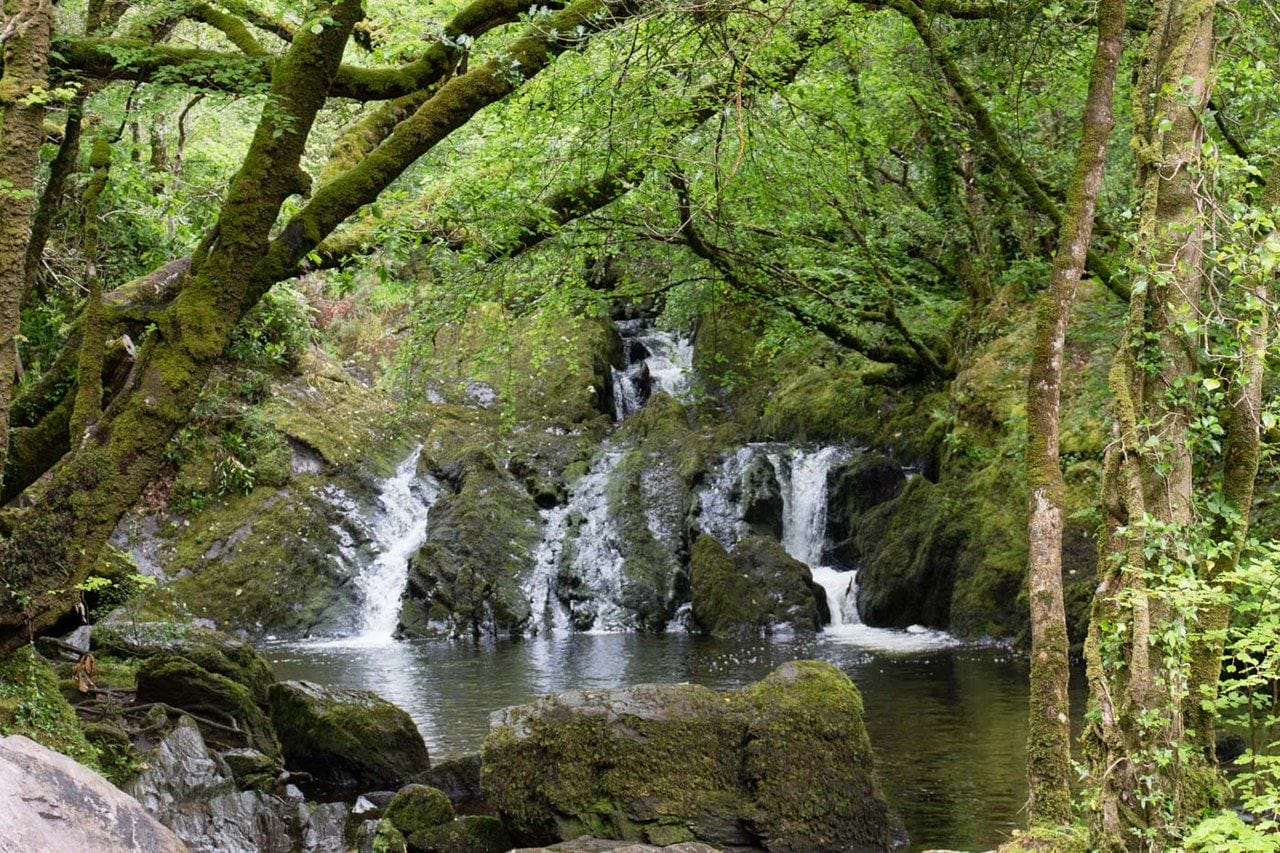
3. Bere Island
A beautiful Island of rich archaeological and military importance, with remnants of British military fortifications still to be seen.
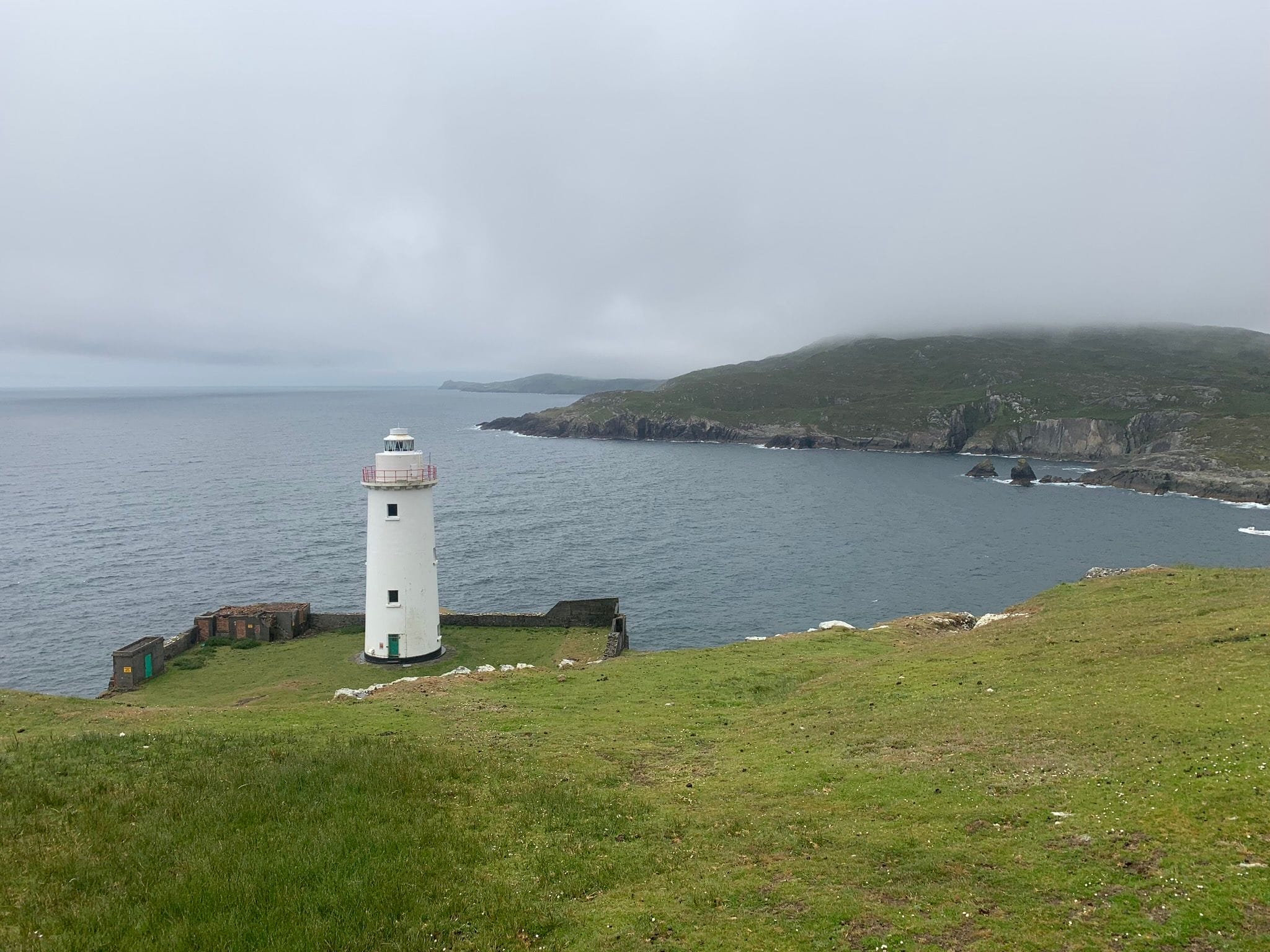
4. MacCarthy’s Bar
A world-famous bar in the lively fishing port of Castletownbere. Expect a warm welcome, a creamy pint and great music. The fame of the bar went global when travel writer Pete McCarthy who had a rule, “never pass a bar that has your name on it” called in to sample its beer and company. In his gentle and funny book McCarthy’s Bar: A Journey of Discovery In Ireland he entertainingly details the quirks of the locals as he traces his roots in Ireland.
Another famous visitor to the Beara Way is Colin Farrell. In his more exuberant days while filming “Falling for a Dancer” he was barred from MacCarthy’s Bar. Some years later, older and wiser Colin made his peace with the landlord as he was in the area filming “The Lobster” and happily swapped stout for milk.

5. Allihies Copper Mines Museum
Allihies was once a mining mecca. In 1812 a rich copper deposit was discovered in the area by the Puxley family which saw the Industrial Revolution come to this most remote corner of Ireland. At one stage 1600 people were employed in the local industry and production finally ceased in 1962. Today the population of the village is around 600 people.
The remains of large Cornish Engines which pumped water from deep shafts are still visible today and you can visit the Copper Mine Museum in the village which traces Allihies’ mining history back millennia. The white sandy beach below the village resulted from the crushing of quartz rock from which the copper ore was extracted. The ore was then exported in sailing ships to the smelters in Swansea. The Museum also displays the work of local artists from this thriving community.
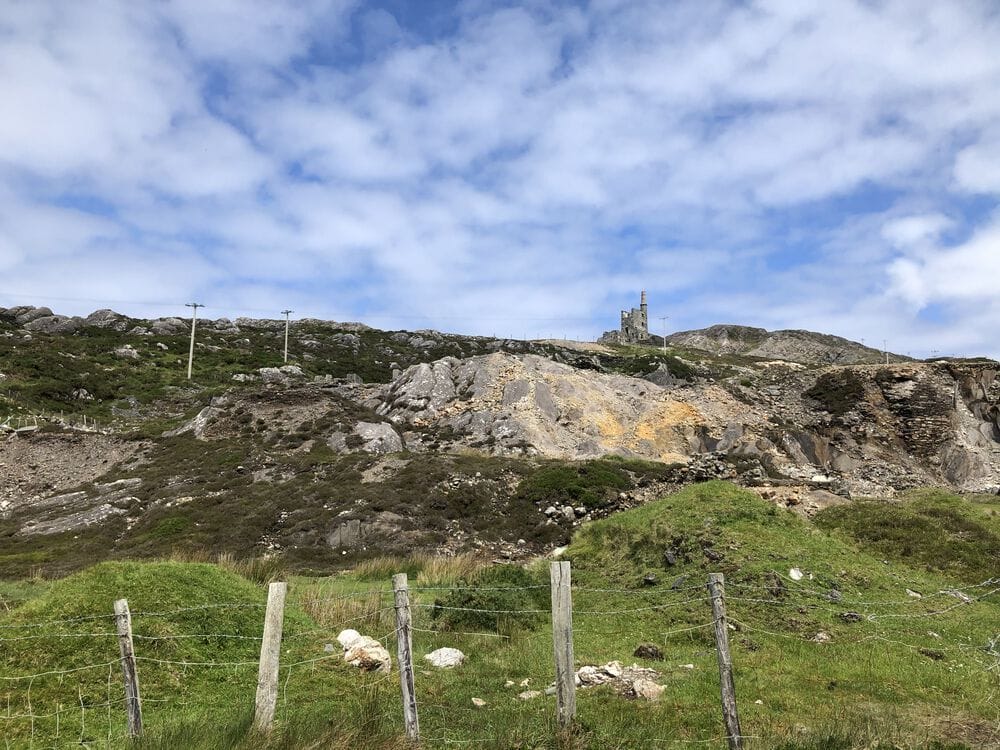
6. Derreen Garden
A jaw-droppingly beautiful 120-year-old tropical ‘jungle’ garden featuring mature woodland and a collection of trees procured during colonial hunting missions.

7. The Uragh Stone Circle
The Uragh Stone Circle is an ancient stone circle, believed to date back to the Bronze age, around 3300 to 900 BC. It is one of the largest and most impressive stone circles in Ireland. Stone circles are a mysterious and important part of Ireland’s rich historical and cultural heritage, and should be on the bucket list for anyone interested in ancient civilizations.

8. Dzogchen Beara
Dzogchen Beara is a Tibetan Buddhist Retreat centre situated high up on cliffs overlooking the Atlantic Ocean, with breathtaking views of sea and sky, on the Beara Peninsula. The Buddhist Centre welcomes visitors all year round, where you can drop in and savour some home baked treats and snacks in their ocean-view café, use their meditation room, light butterlamps (light offerings), ramble the river walk and coastal meadows, or relax in their beautiful gardens with spectacular Atlantic views. The vast open spaces, tranquility, and seclusion provide an ideal environment for quiet reflection and inner transformation.
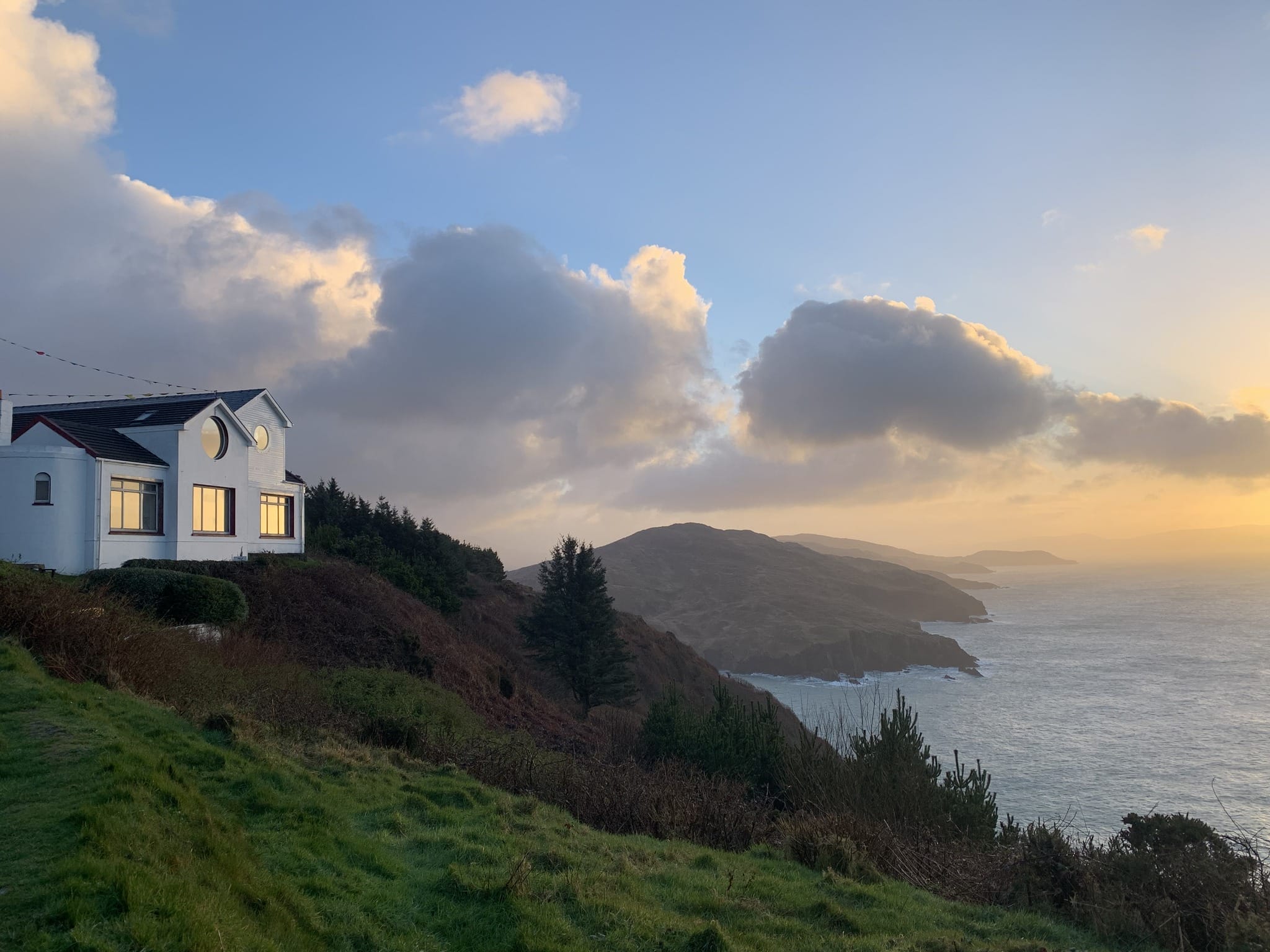
Wildlife
The Beara Way offers a wide range of habitats and wildlife, so there is plenty of opportunity to spot wildlife along the trail. With a good mix of woodland and coastal walking, the trail passes through rugged coastline, mountains, lakes, bogs and woodlands, so you are sure to see a variety of garden and sea birds, and if you are lucky, you may even see native mammals such as otters, pine martens, stoats, red squirrels, bats, deer, feral goats, dolphins and seals at different points along the way.
This varied landscape means the Beara Way is also home to a wide range of plant species including heather, gorse, bog cotton, and various seasonal flowers, and in particular in the Glengarriff Nature Reserve you will find a variety of trees including oak, birch, pine, yew and rowan.

History of the Beara Way
The Beara Way is incredibly rich in history, from the ancient stone circles and megaliths left by the Celts, to the more recent fishing history and that of the copper mines.
The Beara Peninsula has been inhabited since prehistoric times with evidence of early human activity seen at sites like the Drombeg Stone Circle, and the Uragh Stone Circle. We can also observe the remnants of early Christian sites, such as the ruins of Kilcatherine Church.
The Beara Peninsula was the site of several bloody battles between the Irish and English. See this post to read about the 1602 escape of the O’Sullivan Beara clan, Bere Islands military history, and more.
Did you know?
The Hag of Beara, or ‘An Cailleach Bhéarra’ in Irish, is an ancient deity associated with the area, and is usually depicted as an old woman with a blue-grey cloak and a staff. She is associated with the winter months, being the goddess Brigid’s Autumn/Winter counterpart, and is believed to have control over the elements, thus being responsible for storms and natural disasters.
Legend has it that the Hag of Beara created the mountains and valleys of the Beara Peninsula by carrying stones in her apron.
The People & Local Customs
The people of Cork and Kerry are known for their warm and kind nature. It is customary to greet others with a smile, engage in small talk, and show general friendliness towards both locals and visitors. Hospitality is highly valued, and you may often find locals offering assistance or striking up conversations. The region has a rich musical heritage, and traditional Irish music plays a significant role in local customs. Many pubs in Cork and Kerry host live music sessions, and it is customary to join in or enjoy the lively atmosphere. The local residents take pride in their cultural traditions, including music, dance, and storytelling.
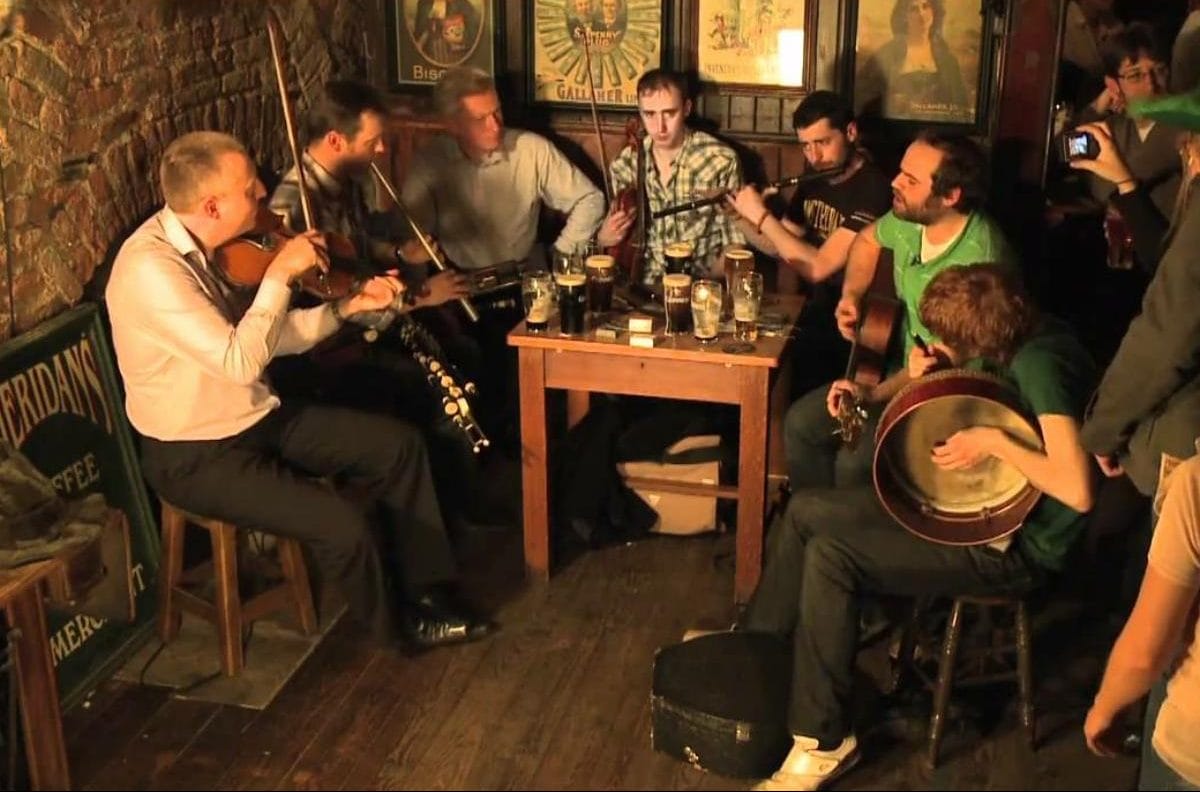
The Irish language, also known as Gaelic or simply Irish can be heard in Gaeltacht areas in County Kerry and Cork. Signs, street names, and public announcements are often bilingual in English and Irish. While English is widely spoken, the Irish language can be spoken in parts. Showing respect for the Irish language and culture is appreciated. Learning a few basic Irish phrases like “Dia duit” (Hello) or “Go raibh maith agat” (Thank you) can be a pleasant gesture. For a quick introduction to speaking Irish as a tourist check out this VIDEO.
Tipping in Ireland is a relatively new phenomenon due to the influx of tourists. However, it is important to note that tipping isn’t socially mandatory and ultimately depends on your own personal preference and of course, in certain environments. When dining in a restaurant, it is normal to leave a 10% tip, whereas anything above 10% is only really given if the service was found to be outstanding. Tipping is not expected in any pub although if you receive table service, a tip is gracious.
The Beara Way Pop Culture
Film and TV
Angela’s Ashes
An emotionally powerful classic of Irish cinema. Although Angela’s Ashes was set in Limerick, it was mostly filmed in Co. Cork in 1999, not too far from the Beara Way.
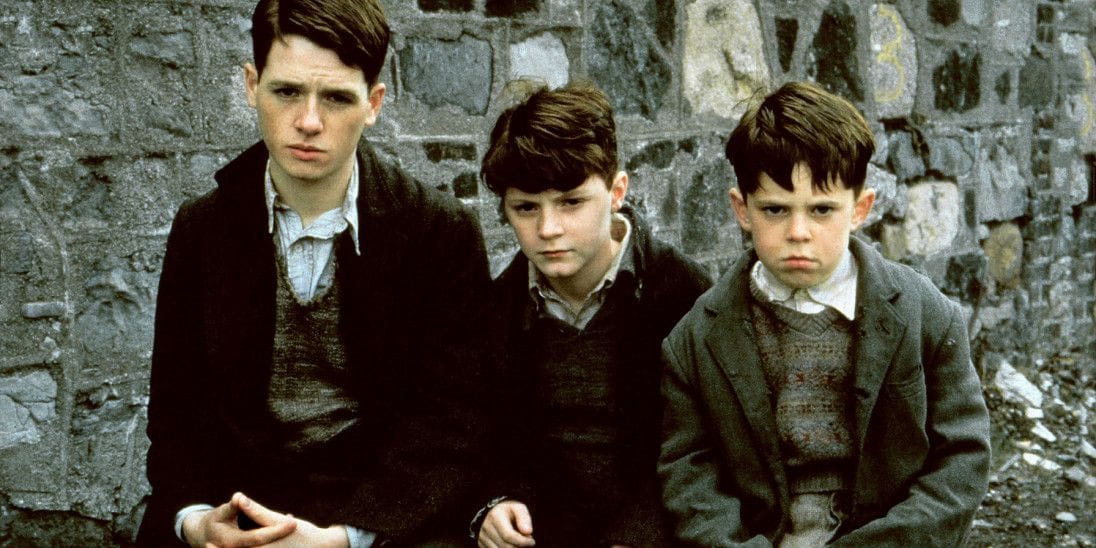
The Lobster
A 2015 dark comedy starring Colin Farrell with some scenes shot in Glengarriff.
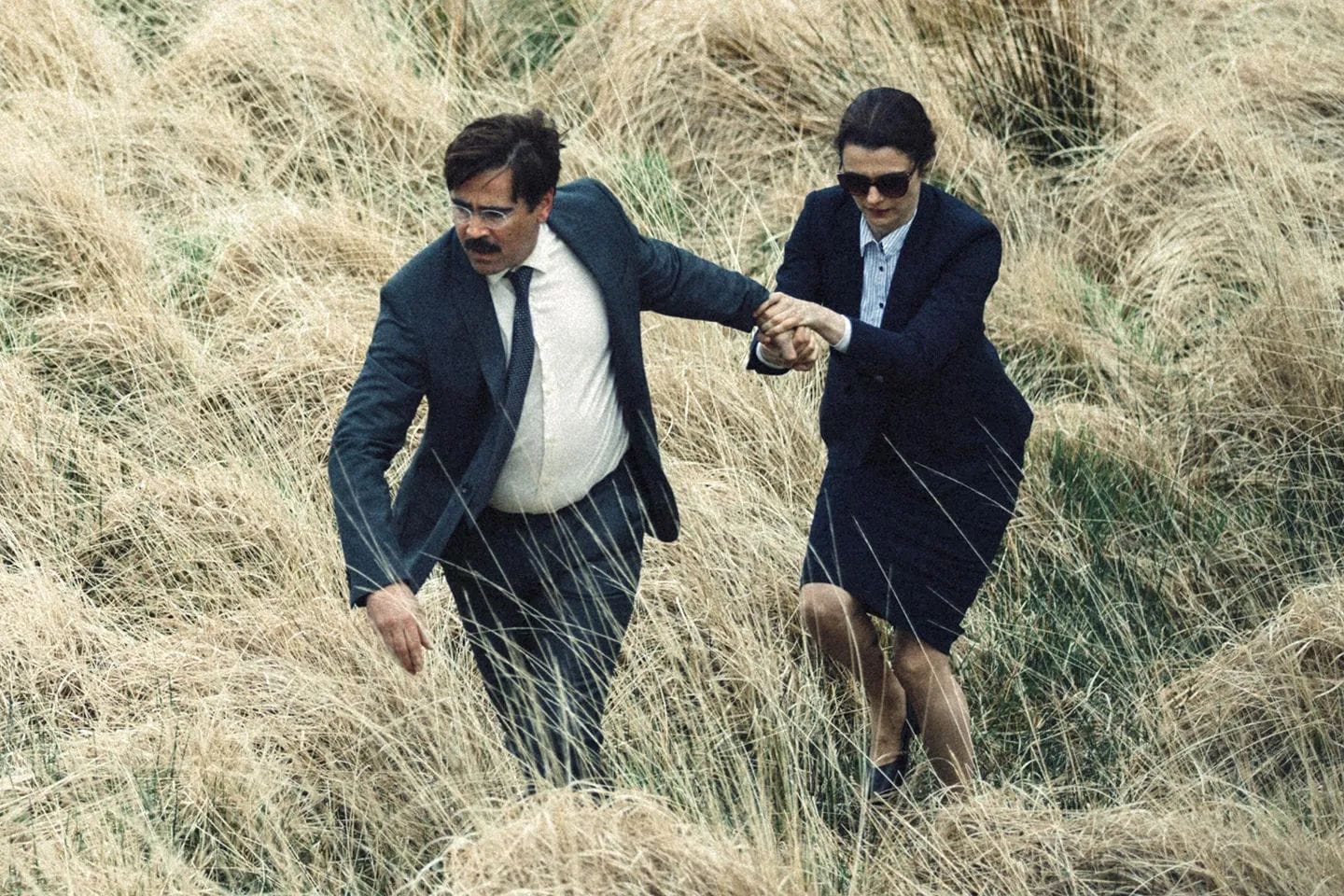
Byzantium
Saorsie Ronan stars in this 2012 supernatural thriller directed by Neil Jordan. The film is known for it’s strong performances and visually striking cinematography, which heavily features the Beara Peninsula.
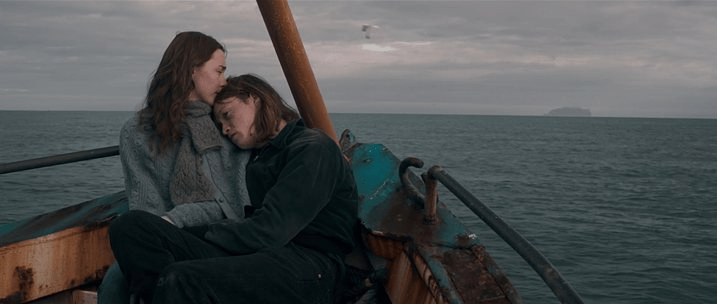
Moon Dance
Filmed with the Beara Peninsula as it’s stunning backdrop. This 1994 film certainly feels it’s age, but it’s strength lies in the stunning cinematography which captures the beauty of Beara.

Music
Song for Beara – Danny Quinn
Books
Beara: Dark Legends
A historian is commissioned to find the final resting place of Fionn Mac Cuamhaill in this atmospheric and darkly humorous novel written by Brian O’Sullivan.

Beara
A photobook by Norman McCloskey that beautifully depicts the Beara peninsula.
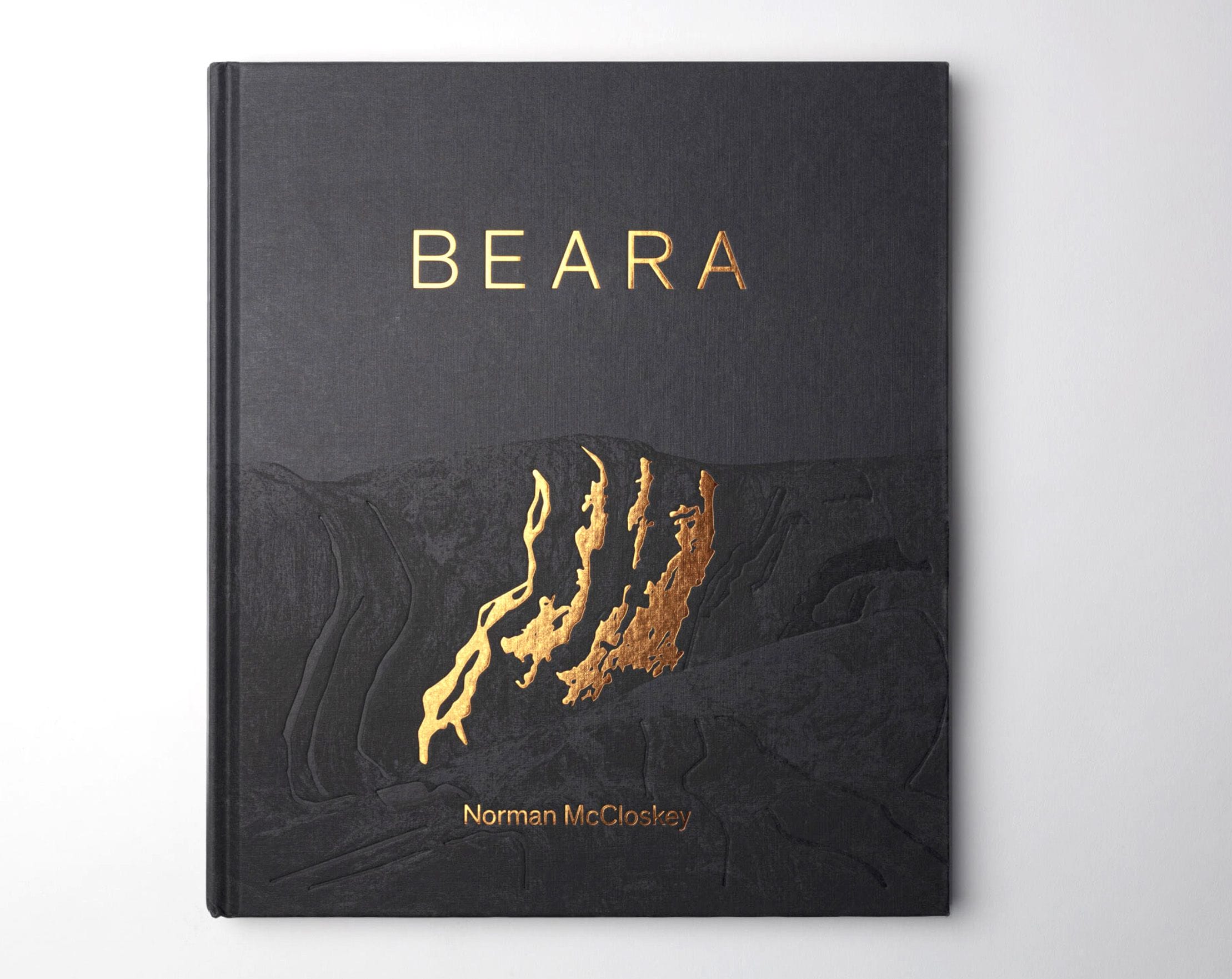
Food and Drink
The Beara Distillery
The Beara Distillery offers a variety of whiskeys and gin. A family run distillery based in the Beara Peninsula whose motto is “The cure for everything is sea air and salt water”.
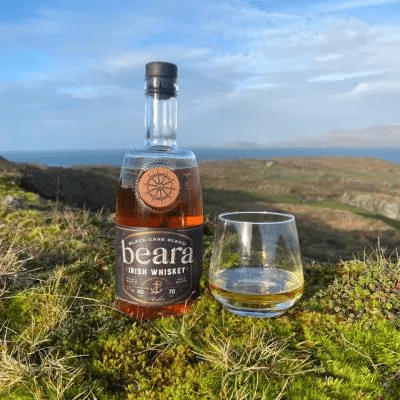
Milleen’s Cheese
Milleen’s Cheese is a soft white cheese produced on the Beara Peninsula since 1976.

Black Pudding
Cork is known for it’s black pudding, a type of blood sausage commonly used all around the island of Ireland as a part of a ‘full Irish breakfast’ or an ‘Ulster fry’ in Northern Ireland. Read all about the food of Northern Ireland in our Ultimate Guide to the Antrim Glens & Coastline. Pictured alongside it below is white pudding, another common Irish breakfast item.

Full Irish Breakfast
And on to the full Irish! A full-Irish breakfast is typically made up of sausages, bacon, black and white pudding, eggs, baked beans, mushrooms, grilled tomatoes and bread. Irish soda bread is used mostly (see below) and it is typically accompanied by lots of tea or coffee. If you are in a hurry, go to a local shop and get a breakfast roll – whereas many of the above ingredients are added into a fresh baguette. You really have not lived if you haven’t tried one of these!

Irish Stew
A typical Irish dinner if there ever was one. A classic Irish stew contains beef or lamb with vegetables such as potatoes, onions and carrots. This is a perfect, nutritious dish for those that hike as it will fuel you throughout the day and also keep you warm. Don’t be surprised if you see a beef stew made with Guinness!
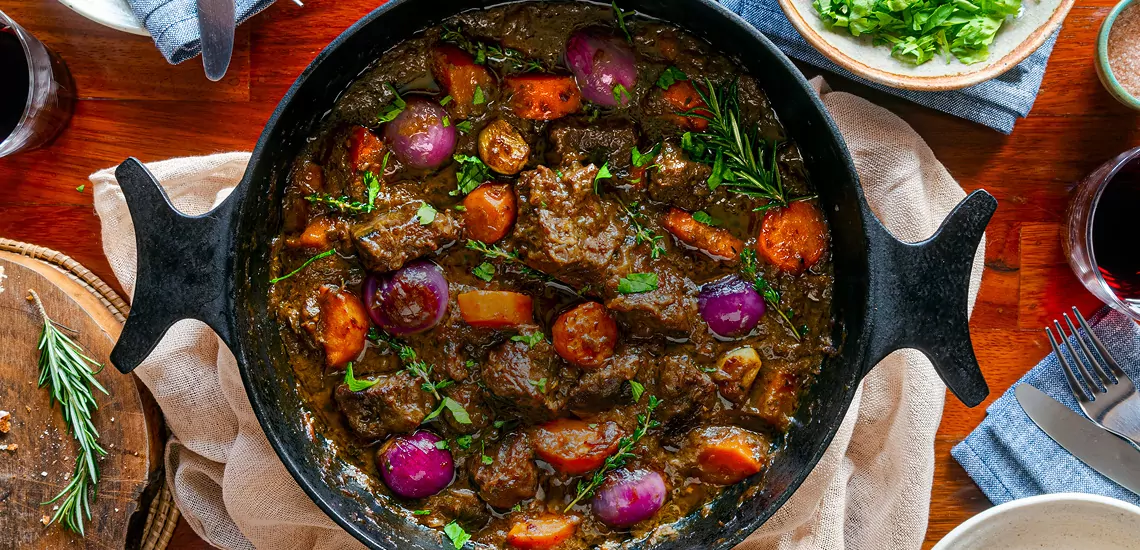
Seafood
Ireland is renowned for its superb and fresh quality seafood. From fresh fish to shellfish, Ireland is a big producer and exporter of seafood. Examples of this fabulous seafood includes salmon, monkfish, pollock, hake, oysters, prawns and mussels. For all of you fish and chips lovers out there, you have not lived until you have tried an Irish fish and chips from a local ‘chipper’.
Seafood Chowder
Seafood Chowder is a hearty soup made with seafood, vegetables and cream and is a popular meal throughout the pubs and restaurants of Ireland. It usually contains fish such as salmon, white fish, and prawns mixed with onions, potatoes, swede and cream. It is typically served with homemade brown bread and is another dish that will keep you full throughout the day!

Bacon and Cabbage
This dish of sliced back bacon boiled together with cabbage and served with potatoes (some form of white sauces optional) has long been a traditional dish of Ireland. This is because each of the ingredients were readily available as they grew their own cabbage and reared their own pigs. You’re trip to Ireland is incomplete until you have tried this typical Irish dish!
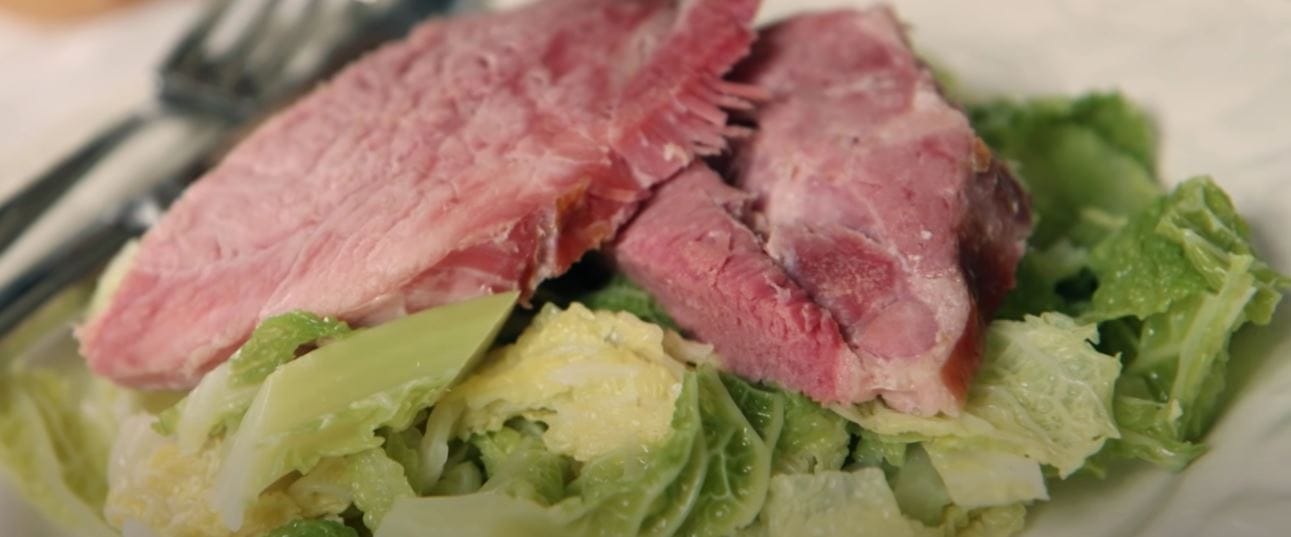
Shepherd’s Pie
Possibly Ireland’s most beloved ‘comfort’ dishes, Shepherd’s Pie is made with a layer of ground beef or lamb and veggies, and is topped with creamy mashed potatoes before being baked to perfection. The dish actually originated in Scotland where crust was used in place of potatoes. However, once it arrived to Ireland, potatoes were quickly opted for instead, and the dish has become a household favourite throughout the country.
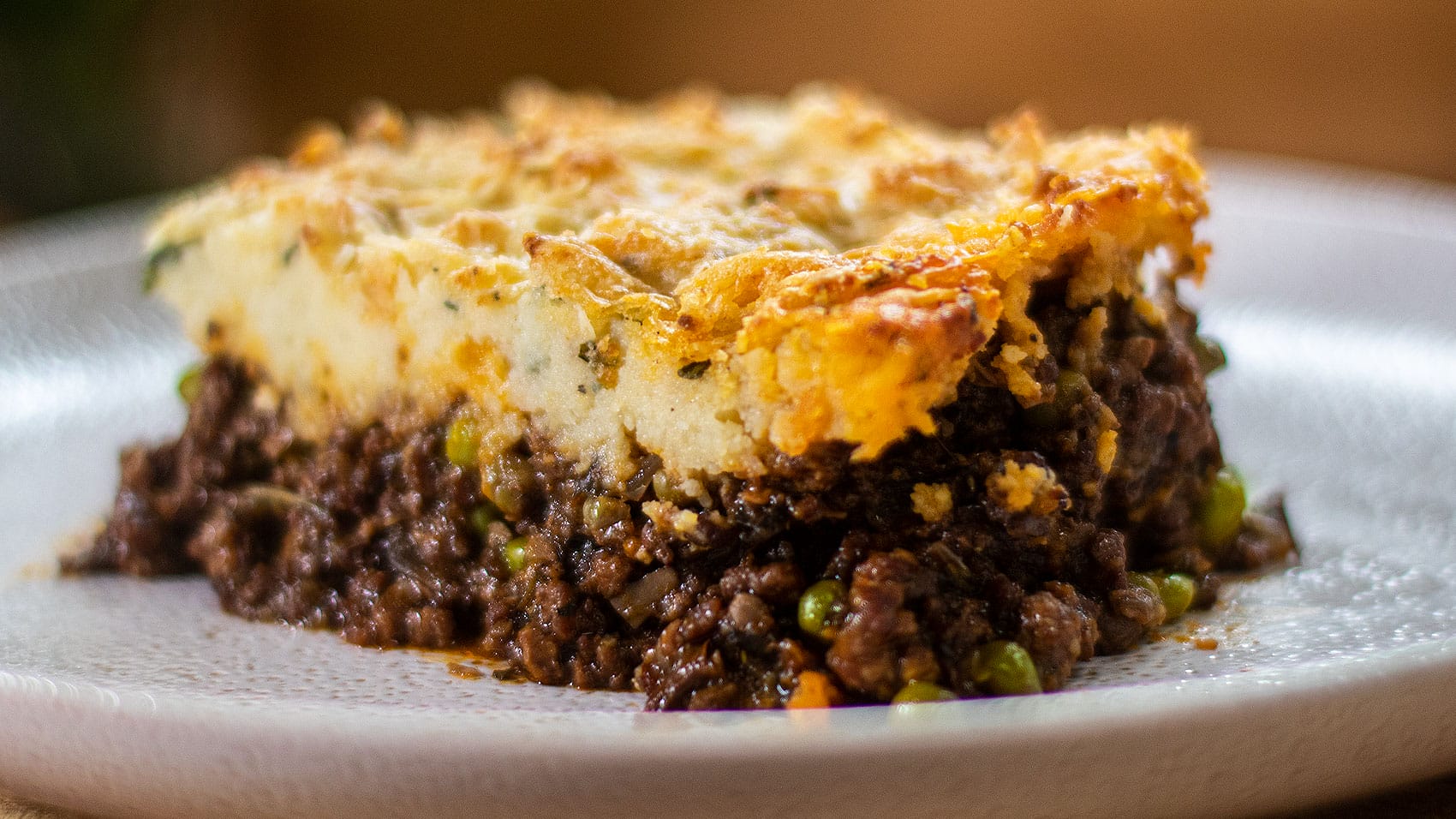
Guinness
Did you even go to Ireland if you didn’t have a pint of creamy Guinness? This dark stout is made from barley, hops, roast malt extract and water. Some of the barley used is roasted to give Guinness its dark colour and unique lactic acid flavour. Brewed at St. James Gate Brewery in Dublin since the late 18th century, this Irish pint is exported across the world, making approximately $2 billion annually. Any Guinness connoisseurs will tell you, you have not had a Guinness unless you have tasted one in Ireland!

Irish Coffee
No, we aren’t talking about Irish roasted coffee beans here. This is a caffeinated alcoholic drink that consists of whiskey, hot coffee, brown sugar topped with cream. There are plenty rumours about how this hot beverage came to fruition but the most commonly believed story is that a head chef in the restaurant of the Foynes Airbase added whiskey to the coffee of some tired passengers who were awaiting a storm to pass. The rest is history!
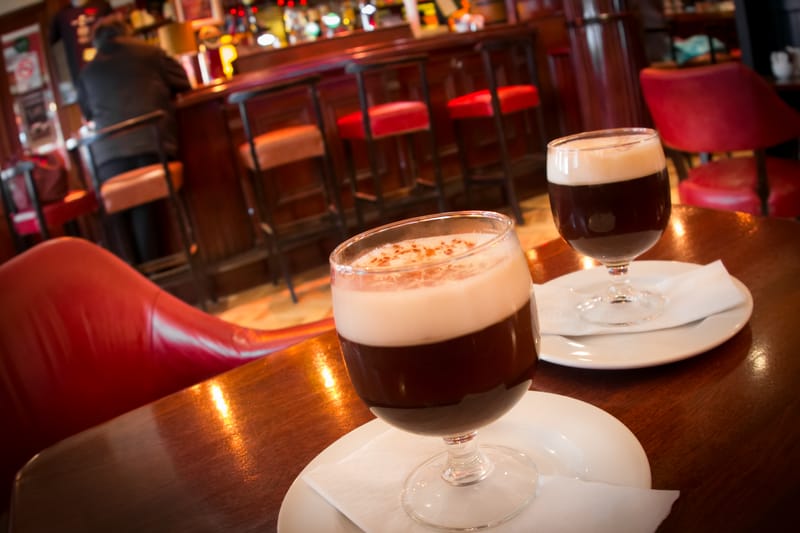
Is The Beara Way Vegan Friendly
The vegan diet has become more and more popular throughout Europe in recent years, and you will find that there are plenty of vegan options available in most eateries. Each of the accommodation we work with at Hillwalk Tours have given us their guarantee that vegan breakfasts will be catered for once they have been informed. That being said, some of the more rural locations of the trail may have limited options so we advise bringing certain items such as plant-based milk, nut butters or protein powders if you so choose.
In addition, the following apps show restaurants which offer vegetarian and/or vegan options:
Nearby Trails
There are various other Irish trails available to you once you have completed the Beara Way. Here are the other Hillwalk Tours English hiking tours we offer:
The Beara Way Tips and FAQs
Probably one of the most common questions asked when walking the Beara Way or any trail for that matter is – what will I pack?
Once you have fully booked your Hillwalk Tours hiking holiday, you will receive a detailed ‘recommended equipment’ list inside your Walking Pack. For those who are still unsure of what to bring, here are some of the things we advise you bring with you along the Beara Way:
– Waterproof Clothing
– Fleece and other warm clothing
– Base Layer
– Light, comfortable Trousers
– Wicking Socks
– Suitable Hiking Boots
– Backpack/Rucksack
– Hat and Gloves
– First Aid Kit and Foil Blanket
– Whistle and Torch
– Insect Repellent
– Mobile Phone
– Plug Adapter/Converter
For more on what to pack – check out these packing musts.
Unfortunately, dogs are not welcome on the Beara Way or the surrounding mountains due to the amount of farm animals such as cattle and sheep grazing on the land.
In addition, as most of the accommodation we work with in this area don’t accept pets of any kind, it is not possible to bring any pets, such as your dog, on a Hillwalk Tours hiking holiday.
If you experience any difficulty or emergency of any kind, it is advised that you phone the relative emergency services on 999 or 112. It is also important to note that mobile phones in Ireland can call this number with or without mobile/cell coverage.
For those who have fully booked their Hillwalk Tours hiking holiday on the Beara Way, we provide 24/7 on-call support to all of our customers and you will receive a detailed description on how to remain safe during the course of your hike.
Yes, solo hikers are more than welcome to complete the Beara Way and the trail proves to be quite popular for solo hikers. However, due to the limited availability of single rooms along the trail, it is important to note that booking early is recommended, in addition to a single supplement charge also being applicable.
We believe that the beauty of the Irish countryside should be enjoyed by everyone. With this in mind, we designed our hiking tours to cater for practically all levels of fitness. Our range of ‘Gentle’, ‘Moderate’ and ‘Challenging’ hikes in all regions allows you to decide how far you wish to walk each day and the pace you set. So, whether you are a novice walker or an experienced hiker, we always have a tour to suit you.
There is a Beara Way Cycle Route which loosely follows the Beara Way hiking trail. It is important to note that the Beara Way was predominantly designed as a long-distance walking route so you may come across terrain, underpasses and gates at several parts of the trail which are simply not passable by bike, making the walking trail impossible to be fully cycled. Therefore, it might be best to leave bike at home this time!
Generally, our tours take place between the months of March to October to hopefully allow for good, dry weather and longer days of daylight while you carry out your tour. This will hopefully ensure that you enjoy your hiking experience with us to the fullest. You can also check out the individual tour page for the Beara Way trail on our website.
Our 7-Day tours include 6 nights of accommodation – specifically the first 6 nights on your hiking tour. Your tour finishes on the seventh day when you check out of your last accommodation. These 7-Day tours include 5 days of hiking. The first and last days of all our hiking tours are travel days used to transfer to/from the town where your hike will begin/end. If you would like to hike for 7 days, simply select one of our 9-Day tours.
The Beara Way Image Gallery

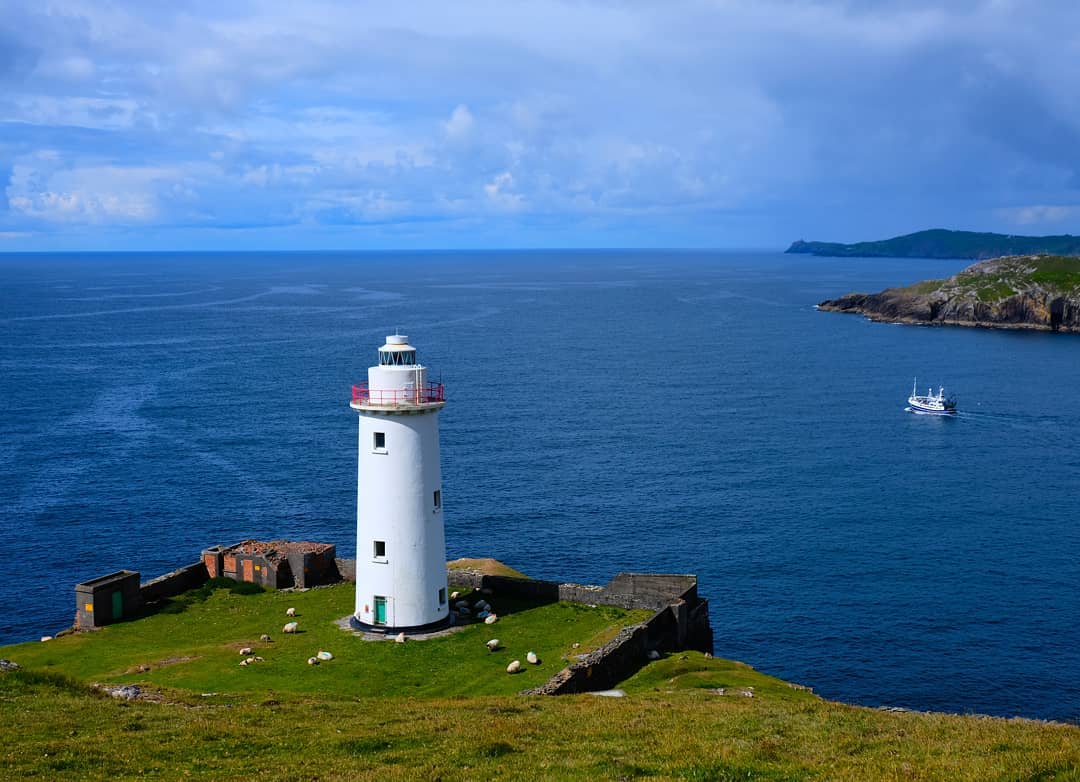
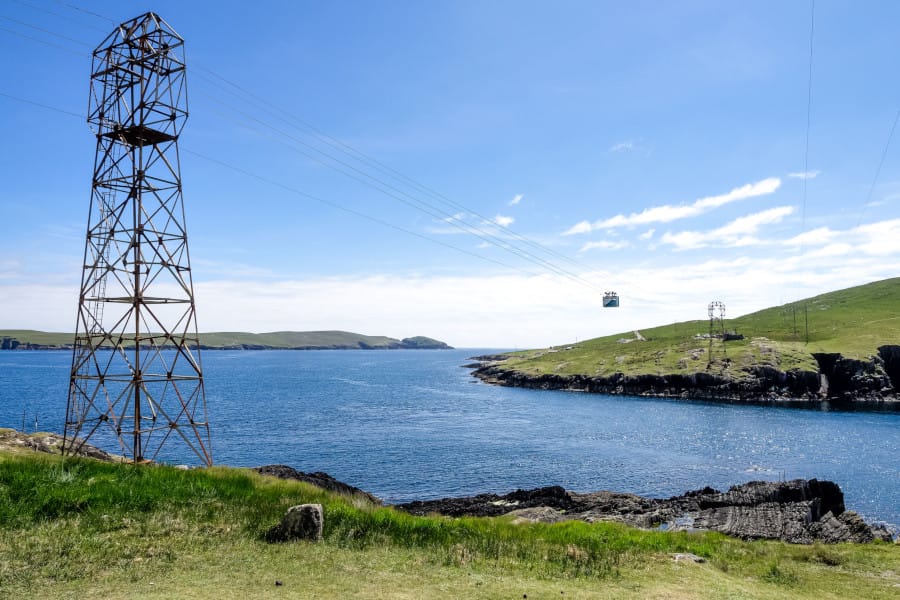

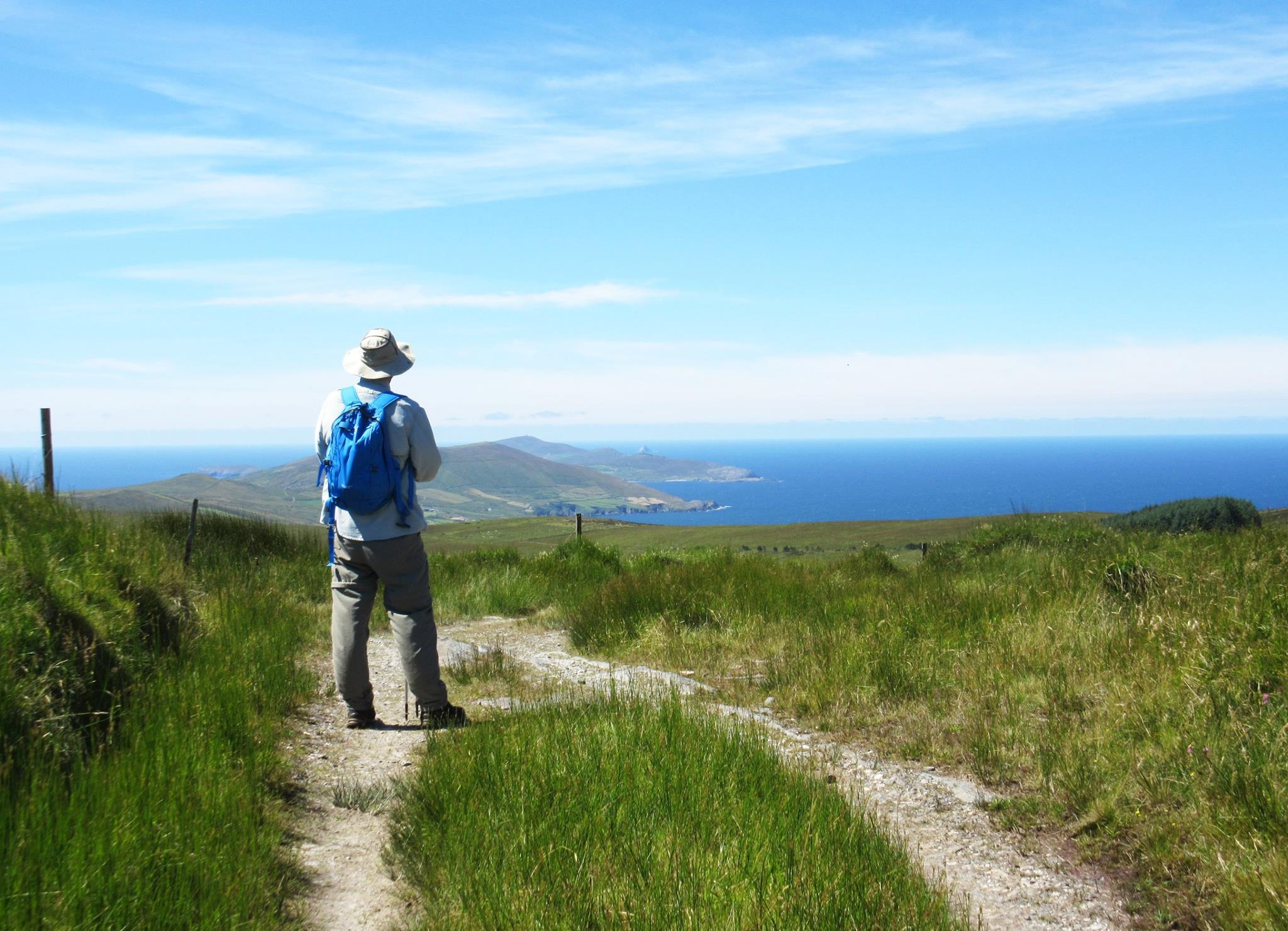
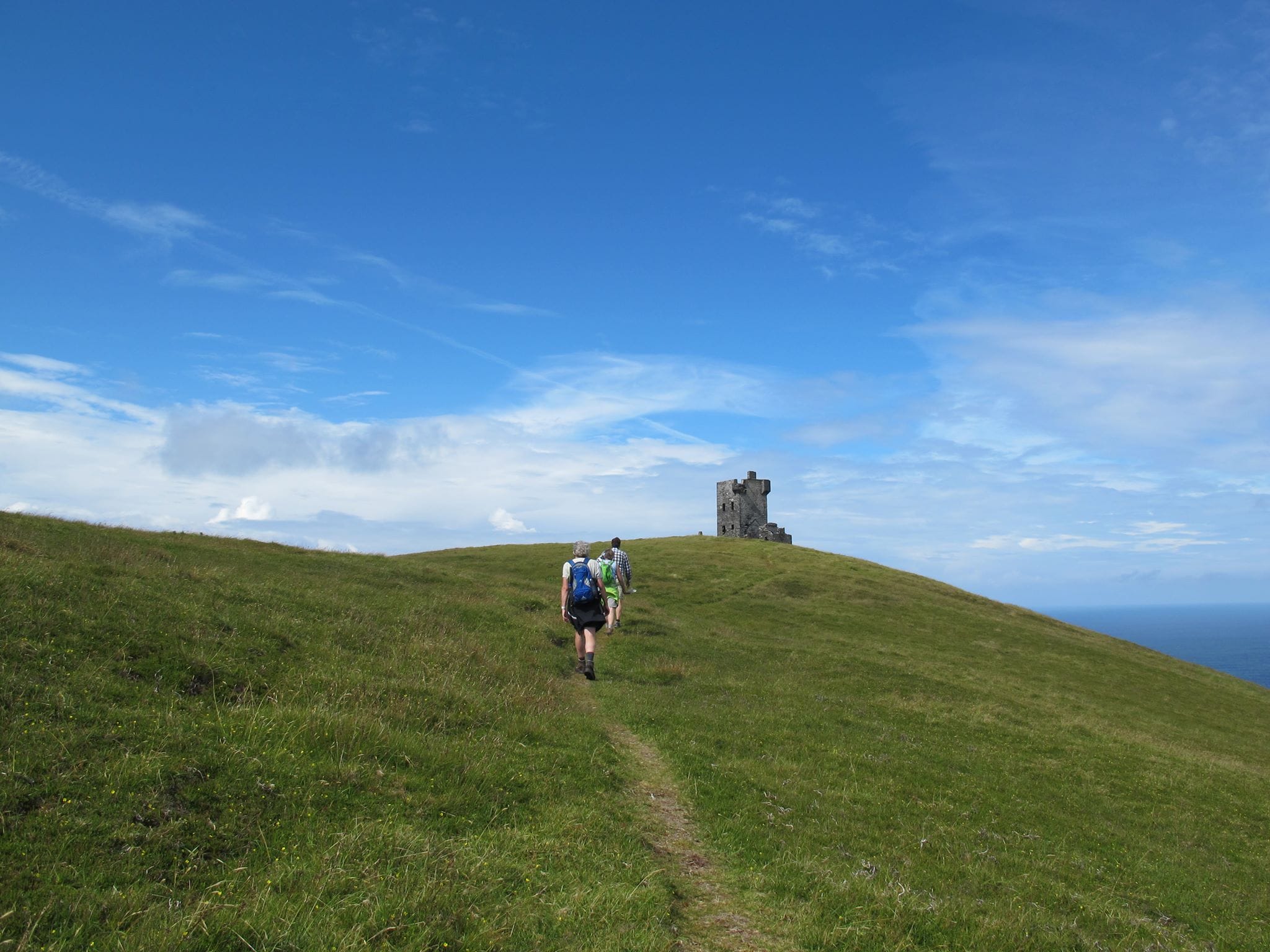

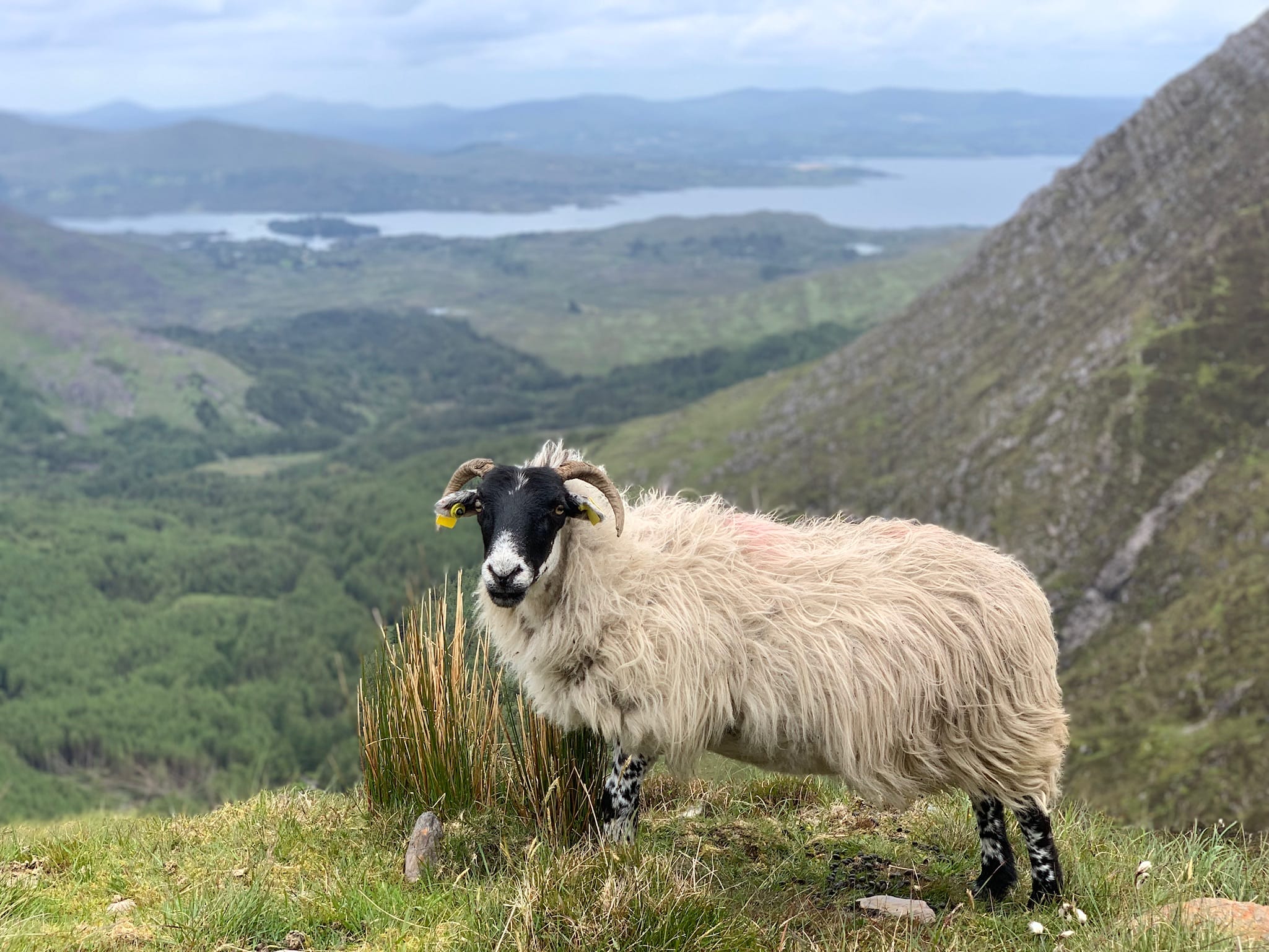
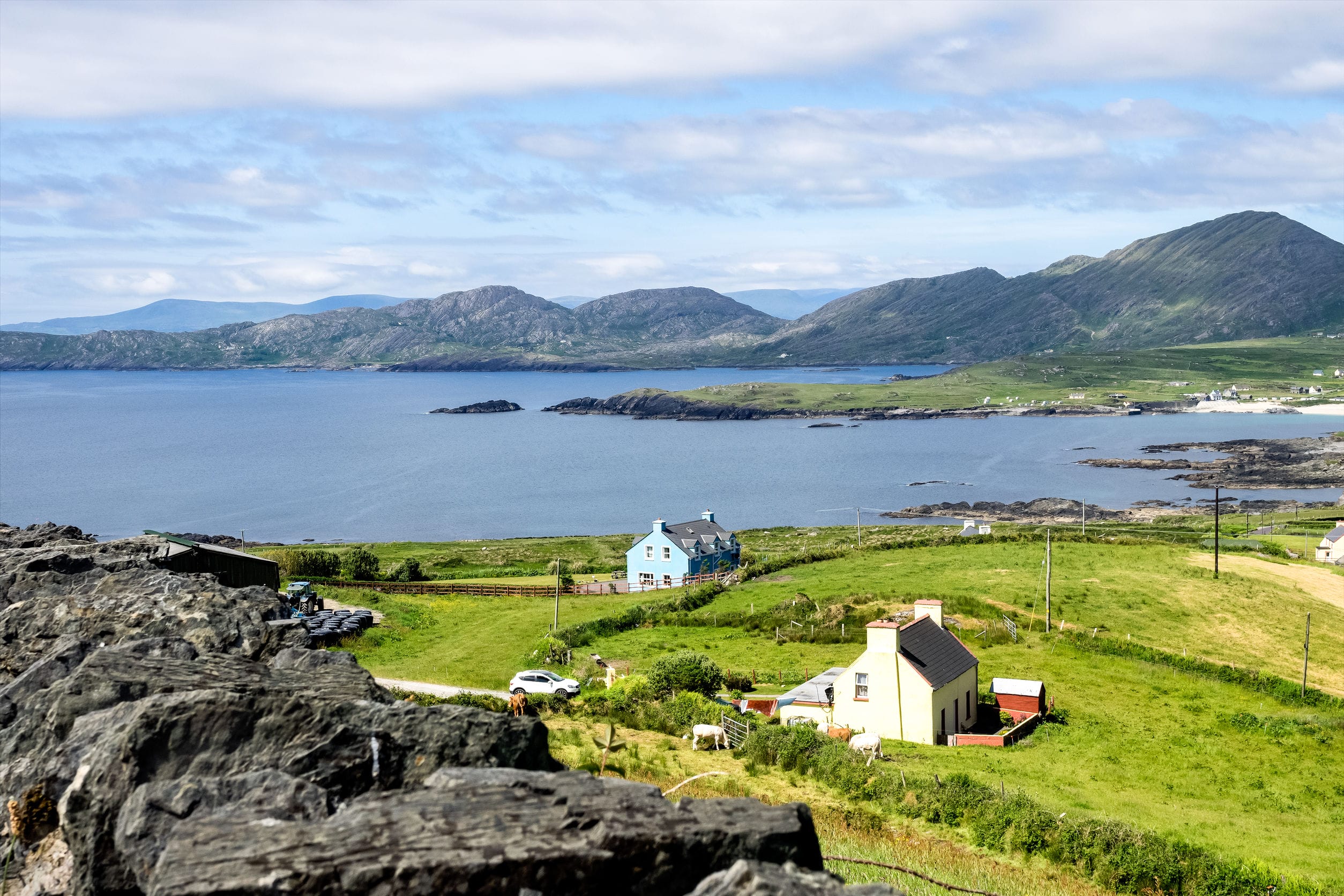
Hillwalk Tours
About Us
Hillwalk Tours is an award-winning walking tour operator which specialise in self-guided walking holidays in Ireland, Scotland, England, Wales and along the Camino de Santiago in Spain. Our goal is to create happy experiences for all of our customers, suppliers & staff.
Fill out the form below with any questions you may have and we will get back to you promptly.
Follow us on our social media platforms
Customer Reviews
Leave No Trace
We like to walk in nature and since you are reading this – we believe you do too! It is important to ensure that our impact on the environment is limited so that hikers can enjoy the same view after us. The rule applies: when you leave, make sure that nature looks the same as when you arrived or simply put “leave no trace.” As more and more people take to the great outdoors, our collective mark on the environment increases.
What does this mean in reality? Of course, do not leave any rubbish or waste behind. Do not collect stones, flowers, or other “souvenirs”. Don’t carve your name on a tree or break branches… I think you get the drift. It is imperative for walkers to play their part in making sure litter, damage to vegetation and all forms of pollution are limited.
Noise can also be a form of pollution. Whoever walks through a forest talking and laughing loudly, for example, ruins the peace and quiet of other walkers, who can no longer hear the birds. The same goes for cell phones that suddenly start ringing. Keep the volume down and respect your surroundings. Ultimately, the point is to ensure that as many people as possible can enjoy walking through nature. So that applies to you, but also to those who tread the path after you.
Hillwalk Tours proudly supports sustainable tourism and loves the countryside as it is – wild, peaceful and clean. We are proud to support the “Leave No Trace” initiative that aims to preserve the natural beauty of each nations countryside where we offer hiking holidays. We try to create happy experiences for our accommodation too, and the restaurants, shops and taxi companies that serve our walkers. These are often small businesses located in isolated areas that have been left behind by urban migration and a lack of investment in rural regions. Their warm hospitality and friendly welcomes epitomise the magic of a Hillwalk Tour and we’re dedicated to helping keep these rural communities alive.
The Benefits of Hiking
In recent years, walking and hiking outdoors has been widely reported to have numerous physical and mental health benefits. The following are examples of some of these benefits:
Improve strength and fitness
- Weight loss
- Muscle gain
- Improve metabolism
- Improve digestion
- Better quality sleep
- Increase in Vitamin D
- Improve discipline
- Sense of achievement
- Living in the present moment
Hiking Equipment List
For a more in-depth list of recommended hiking equipment list, click here.
Make A Booking
Are you ready for your Beara Way adventure? Get started by simply filling out the booking form below!


